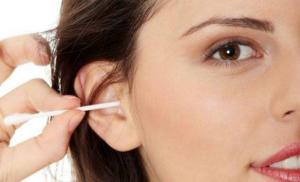Virtual reality helmets: do they heal or cripple? Virtual reality glasses are harmful.
While VR fans and opponents debate whether glasses are harmful to the eyes virtual reality, scientists are testing a vision restoration mechanism using VR headsets.
Possibilities of using virtual reality technology for vision correction own experience checked by James Blaha - owner of Vivid Vision. His example proves that VR is not just for entertainment.
The company has created an application for virtual reality helmets called Vivid Vision for Amblyopia. The program should help users fix . The application provides game exercises for training the eye muscles, tests to check the condition of the eyes and individual functions for the treatment of identified diseases.
What will a virtual reality system help combat?
Strabismus is often caused by weakness of the eye muscles. As a result, the pupil shifts away from its natural position, and the patient loses the ability to see three-dimensionally. visual perception. With strabismus, it is difficult to determine the distance between objects, the eye becomes confused. The whole complex of symptoms is called “impaired binocular vision.”
With strabismus, the brain is not able to process visual signals normally - the eyes transmit too contradictory information. In an attempt to compensate for the discrepancies, the brain “turns off” the processing of signals from the diseased organ, amblyopia occurs.
Specialized projectors are used to treat “lazy eye” (amblyopia) and strabismus. When operating, the devices transmit two different images (individual to each eye), forcing weakened muscles to work. James Blaha, who suffered from the same problems, used similar devices for some time. According to some users, their eyes hurt from virtual reality glasses. Discomfort arises from overstrain of the eye muscles. This conditional can also be put to good use.

After entering the market with a set of developer tools, Blaha decided to improve the medical technology using a new product. The result of his work was the Vivid Vision for Amblyopia program. As with projectors, two images are shown to the user. In this case, the brain forces the weakened eye to work on transmitting the image in volume. Having become accustomed to transmitting signals normally in a VR device, the eye continues to function fully in reality.
Blaha used his own development for two years. According to the entrepreneur, before starting training with the application, visual acuity in his damaged eye was 20/70, and the ability for three-dimensional perception was almost lost. A year later, the indicator improved to 20/40, and James could already see the volume in the helmet. Two years after the start of training, visual acuity was 20/25, and the ability to see three-dimensionally remained in Everyday life.
The program has not yet officially left the beta stage; the technology is being tested in specialized ophthalmological institutes in the United States.
Copied from the website website Subscribe to our TelegramAny technological device, especially one used in everyday life, is assessed from several points of view, where the important thing is how harmful it can be to humans. This approach to technical innovations has a long history. Even at the time of the birth of the same cars, people were worried about their safety, as they were afraid of these noisy carriages without horses.
With modern devices everything is much simpler - they do not pose a danger to human life, but can threaten his health. For example, prolonged sitting in front of a computer monitor causes vision impairment. What are the dangers of virtual reality glasses, which are essentially head-mounted monitors? Does long-term use lead to decreased vision? Are there any other dangers from such devices? Let's try to answer these questions.
It is believed that the use of Oculus Rift glasses does not lead to loss of vision and, moreover, they cause only a small degree of eye fatigue. No, the eyes get tired, but not as much as when using computer monitors, which is due to the so-called fixed gaze. Looking at the monitor means being at the same distance from the object of viewing, which is avoided in the Oculus Rift. Focusing vision with the help of this type of glasses is characterized by variability, since the displayed picture constantly changes its distance, which provides the necessary movement of the pupils, which is comparable to how this happens in everyday life without the use of various devices.
In this regard, we can talk about the absence of direct threats from Oculus Rift. Danger in in this case arises from something else. Dive into virtual world leads to the user losing a sense of reality. As a result, there may be problems with the vestibular apparatus. Therefore, it is advisable to take regular breaks during gameplay, which will restore “lost” body functions and give rest to the eyes. Also important is the furnishings of the room used to be in the virtual space. Try to get rid of unnecessary interior items that could cause you to trip and fall. And the configuration of the room itself can be somewhat dangerous if, for example, there are sharp corners of the walls.
To summarize, we can state the complete safety of Oculus Rift glasses in relation to the player’s health, if the measure of their use is observed, since many hours of isolation from the real world can hardly be considered something reasonable and useful.
We asked doctors whether a virtual reality helmet was dangerous for children. If everything is clear with adults (the vestibular apparatus can be trained), then with a growing human body many questions arise. Manufacturer age restrictions
First, you should pay attention to what the manufacturers themselves indicate. For example, and has an age limit 13 years and higher. U - 12 years. Company HTC directly does not indicate specific age, but simply mentions the undesirability of using a helmet for children. But how were these restrictions determined? Is this a legal formality or is it actually a threat to the child’s health?

Optometrist and professor of visual sciences, psychology and neuroscience at the University of California at Berkeley (USA) Martin Banks(Martin Banks) says that he has not yet seen direct evidence of a negative effect from the use of a virtual reality helmet by children. " I think all manufacturers are starting from the very fact of children’s development, which slows down with achievement adolescence, in which they can already play safely for their health. Therefore, they advise people not to allow the use of (a VR helmet - author's note) during the period of significant development of the child».
That is, manufacturers of VR headsets are simply cautious in light of the fact that virtual reality is a relatively new technology, and we simply may not be familiar with it side effects which will appear in long-term follow-up.
Professor Banks believes that the displays of a virtual reality helmet located close to the eyes can cause the same strain on vision as a phone or book when viewed from a short distance. As a result, this will result in the development of myopia (myopia). This problem is very common on our planet, and is often caused by such hobbies as reading books and working on the computer. You can distinguish nearby objects well and clearly see all the details, but distant ones are blurry and difficult to focus on.

However, Mr. Banks notes one important difference between a book/smartphone and a VR headset. In the first case, vision is focused on one point close to the pupils. When the optics of a virtual reality headset stimulate the vision to observe a fictitious distant object. This deceptive effect reduces the load on the eye muscles, therefore, without causing disturbances in the functioning of the visual organs. That is, a VR helmet can have less problems than books or smartphones.
Stereoscopic deception
At the same time, professor Peter Howarth(Peter Howarth) as an expert in optics and teacher in the field of imaging notes that the difference between a person's natural view of the world and viewing stereoscopic three-dimensional scenes through the optics of a virtual reality helmet is quite significant. The headset imitates a real image, presenting different pictures to the eye.
« The ability to see and distinguish details depends on the formation of a sharp image on the retina. Again, using the VR system intermittently should not have any impact negative influence on vision, even if the image quality is significantly inferior to the picture of the real world", - assures Peter.

Moreover, he believes that such devices (VR helmets) will help medicine cope with the problem of “lazy eye” (amblyopia), for example. That is, virtual reality not only practically does not damage vision, but even with a reasonable approach will help humanity get rid of physiological problems.
Doctors are aware of the following problems when using a VR helmet:
- Visual and vestibular-induced motion sickness
.
If you've ever experienced serious discomfort on roller coasters or other extreme rides at amusement parks, then you'll experience the same thing with a VR headset.
- Latency causes nausea effect
.
Manufacturers pay attention to this aspect Special attention- the physical rotation of the user's head and the subsequent shift of the camera angle in the virtual world occur with a slight difference in time, called delay. With prolonged use and in case of insufficient system performance, this leads to nausea, motion sickness, headaches and other similar “motion sickness” effects.

Some games offer owners of a VR helmet full body tracking with transfer of movements into virtual space. Bumping into corners or hitting anything in the room won't be a problem if your eyes can see nothing but the headset's displays. Manufacturers equip their systems with warning software so that this doesn't happen. But this may not work with a child.
- The brain needs time to return to real world and adapt
.
Simplified rules and maximum effect tricking the brain through visual and auditory organs forces a person to immediately immerse a third of his nervous system into the virtual world. After one active game, coordination and postural stability are impaired. Not recommended, such as driving or operating complex technology, as stated in the operating instructions.
Children can use a VR headset, but be very careful
You cannot ban a virtual reality headset for children - there is no direct threat. But there are many indirect dangers that can arise without adult supervision. Starting from the likelihood of a fatal blow to the corner of the table and ending with psychological dependence on VR games.

However, the same can be applied, for example, to a smartphone. A child can look at its screen and fall through a hatch, or experience acute neurosis when losing a phone, right? So, the manufacturers simply protected themselves at the legal level, so that if a child under 12 years of age got into trouble due to the use of a VR helmet, then the parents who allowed this to happen would find it difficult to sue the manufacturer for anything.
On March 28, the era of virtual reality officially began. The first new generation Oculus Rift helmet has gone on sale.
The possibility of maximum immersion into a fictional three-dimensional world has long attracted bigwigs from the entertainment sector and IT, but no one has yet succeeded in making a mass-produced virtual reality device. Thanks to the Oculus Rift helmet, March 28 may be the date such a device appears.

However, no matter how new it is or its competitors in the form of HTC Vive, Samsung Gear VR and Sony PlayStation Whether VR succeeds or fails, the fact is clear: these headsets can create the illusion of being in a virtual world like no other device has ever done before. Of course, we do not take into consideration specialized virtual reality complexes in the service of military and special civilian services.
All these years, virtual reality was outside the mass market, and participants in laboratory experiments were, by default, observed by many specialists, if only because of the enormous cost of the equipment. Entering the mass market of VR devices ( common abbreviation forVirtual Reality - literally "virtual reality") poses questions to society that manufacturers of these devices are in no hurry to answer: how safe it is, what are the rules of use, and whether the majority of consumers can really use virtual reality helmets without harm to their health.
This “frivolity” can be explained by two main reasons. The main and main prosaic thing is the pursuit of commercial gain, because the sooner a product is released, the more money the manufacturer will earn and the larger market share it will be able to win. It would seem that regulatory authorities should limit the appetite for profit, but here the manufacturers of VR helmets have prepared a saving excuse: formally, virtual reality helmets have been produced for decades and have not caused any significant problems for users.

New or well forgotten old?
Here, however, two circumstances need to be clarified. Without exception, all helmets of previous generations failed in the mass market and were distributed in a maximum circulation of several thousand, which means that there can be no talk of any mass experience of use. And secondly: they could not boast of such an impact on humans as the new generation of devices.

By and large, previous attempts to transfer the player into virtual space boiled down to the fact that a static monitor screen was reduced and turned into a low-quality helmet screen in front of the player’s eyes, sometimes with some stereoscopy (volume vision) effect. The fundamental difference between the new generation of devices is that they quite accurately convey the movement of the head in virtual space, and some models even recognize the movement of the player in the room, including his hands, and correlate it with the game character.

This seemingly small detail radically changes the user’s perception: the brain quickly begins to associate itself with the virtual body (protagonist), and this association is fundamentally more complete than when reading a picture from a monitor or TV. But this also implies a whole series of potential problems and threats, starting with dizziness and nausea, which almost all owners of new products experience, ending with possible mental disorders after long-term use in games associated, for example, with violence. In order to determine the possible harm and benefits of virtual reality helmets, we talked with experts in the field of psychology and psychotherapy, and also conducted several experiments.

Can a new generation virtual reality helmet harm the psyche?
Olga Dobrushina, neurologist, CEO International Institute psychosomatic health:
- Can a computer game, film or book harm the psyche? There are many factors here - it all depends on the type of personality, on how much a person is immersed in the virtual environment. A virtual reality helmet probably does provide a greater immersion effect compared to a computer, but this issue still needs scientific evidence. Among the side effects of VR helmets, which are indicated by the manufacturers themselves, are dizziness and nausea, and in very rare cases (1 in 4000) - convulsions and epileptic seizures.

However, we can already state that people with disabilities should use the helmet with caution. psychological disorders such as perception disorders, problems in mental development etc. Those who are depressed or have an anxiety disorder should also avoid wearing a helmet.
We were able to draw such conclusions thanks to our extensive experience working with these devices: our institution has been cooperating for several years with the Faculty of Psychology of Moscow State University, where research is being conducted on virtual reality and its impact on humans.

The neurologist especially noted that, as in the case of computer games, it is necessary to clearly distinguish real life and virtual life: do not run away into a beautiful virtual world from solving problems. And the main risk group here are children and adolescents, as well as people with a tendency to addictive behavior. However, to confirm the thesis that a helmet is more harmful than some more familiar means of computer leisure, there are not enough statistics on its use and specialized research.
Sergey Martynov, psychotherapist, general director of the Prosvet center for psychological assistance :
My advice to anyone who has doubts before using a VR headset is not to be lazy and consult with a psychotherapist familiar with negative impact VR Despite the fact that the technology is really new and there is no medical practice yet, a psychotherapist will probably be able to point you to possible complications or negative effects that may occur specifically for you. 
The universal warnings are as follows: pregnant women, elderly people and people suffering from cardiovascular diseases, epilepsy and other severe mental illnesses, as well as visual impairments should refrain from virtual reality. Children under 13 years of age should not play with helmets, or use them under adult supervision. Playing for long periods of time is not a good idea for anyone, regardless of gender or age, as it can negatively impact hand-eye coordination, balance, and the ability to multitask.
The International Institute of Psychosomatic Health was one of the first in Russia to begin treating certain mental disorders by immersing the patient in virtual reality. We did not fail to take advantage of the experience of the institute’s specialists and carried out several experiments. The first of them was devoted to a therapy session with the participation of a patient suffering from arachnophobia (pathological fear of spiders).
As it turned out, in addition to various phobias, VR helmets are used to treat anxiety disorders, depression, post-traumatic stress disorders, as well as to diagnose and train cognitive functions (memory, attention, spatial thinking, etc.). Particularly effective is the treatment of aerophobia, a common disorder in which a person is afraid of using airplanes.
In the most severe cases, panic attacks occur even at the sight of some parts of the interior of the aircraft cabin. Thanks to virtual reality technology, the patient is first shown toy models of airplanes, then more and more similar to real planes, invite a person to go inside the plane, take off, and gradually increase the time of the virtual flight. In combination with psychotherapy, you can get very good and quick results.

However, here lies one of the most great dangers- According to official statistics alone, there are now more than 10 million patients in the world suffering from various phobias. If we consider that a considerable part of people do not recognize their mental disorder, the actual number may increase several times. And since modern virtual reality helmets immerse you in a situation so well that they can be a medicine, it means that their uncontrolled use can cause comparable harm.
A person who has, say, a hidden fear of open spaces (agoraphobia) suddenly finds himself in a gaming situation in the middle of huge field and goes into a state of panic. Such stressful situation depending on the strength of the effect, it can provoke side effects - from short-term disturbances of perception and poor health to a heart attack.
Alas, the “bright” side is best studied new technology- that is, its use in psychotherapy. All experts agree that there are neither sufficient statistics nor clinical studies to introduce any regulatory rules. However, we can give recommendations that could protect you and your loved ones.

First of all, you should be honest with yourself, if you know about any problems, even if you yourself do not consider them serious, carefully study the multimedia product (game, movie) that you will watch in the helmet. Prepare a place for the game: remove sharp and fragile objects, most users, under the influence of the picture, begin to move, as in the game, and even dodge blows. If the game may contain scenes that would seem unpleasant to you, ask another person to stay with you, it is not at all necessary to tell him about the reason - he is unlikely to refuse to get acquainted with a technical novelty.

All games coming to market are subject to mandatory certification indicating age and listing scenes, be it violence, drug use, obscene language, etc. Obviously, if virtual reality technology really becomes widespread, additional certification will be required indicating potentially traumatic scenes when using VR headsets. But until this happens, taking care of your health is entirely in your hands.
Like any new technology, VR headsets take time. Who knows, perhaps in the near future in our city clinics, therapy sessions using virtual reality will become as commonplace as, for example, physiotherapy, and content for home entertainment will be guaranteed to be safe.
In this post I will try to prove that a virtual reality display is more useful than a monitor, tablet or phone for squint, myopia and crooked posture.
Many posts have appeared on Geektimes about the structure of the eye and the functioning of the human visual system. This article complements this list with a description of the problems of our eyes.
Disclamer / axiom: displays are harmful because... emit their own light rather than reflect it. Here are the main enemies for geek eyes: unnatural brightness, pulsating backlights and the fact that we forget to blink. But now I won’t consider them.
Idea 1. Strabismus will be corrected when using VR
 Strabismus most often appears before the age of 3 years. Medicine knows more than 20 options, but the complication is always the same - the brain “freezes” in a mode where the image from one eye is ignored in order to avoid double vision. (Amblyopia or lazy eye) With exercises, you should consciously “connect” the oblique eye and begin to develop the muscles and ligaments until they are aligned.
Strabismus most often appears before the age of 3 years. Medicine knows more than 20 options, but the complication is always the same - the brain “freezes” in a mode where the image from one eye is ignored in order to avoid double vision. (Amblyopia or lazy eye) With exercises, you should consciously “connect” the oblique eye and begin to develop the muscles and ligaments until they are aligned. 
The Internet knows many devices for treatment, both effective and those powered by the “Chizhevsky chandelier.”
 Inside there are 2 separated image channels, where a contrasting object is depicted, which the healthy and “lazy” eye grabs. It is expected that at the end of the session the eyes will converge along the axis and look at one point in the distance. The therapy is performed over several sessions.
Inside there are 2 separated image channels, where a contrasting object is depicted, which the healthy and “lazy” eye grabs. It is expected that at the end of the session the eyes will converge along the axis and look at one point in the distance. The therapy is performed over several sessions.
VR offers access to replace complex mechanical equipment. The display will be able to display a contrasting picture, and the cost of Google Cardboard is $1 with delivery to Aliexpress. In the next article I will tell you about the company that built successful business on this idea.

Agree that inside this device there are mechanical mirrors controlled by cables and gears. And I highlighted the incandescent light bulb in red. (it's not even LEDs - it's Ilyich's lamp!)
Agree that if a child does not need to bend, then his posture will not suffer from studying.
Therefore, I will leave the possibility of correcting posture using VR without explanation. (especially since I have no arguments against the excessive weight of helmets and the shifted center of gravity).

Health to everyone and if there are any mistakes, write in a personal message.













